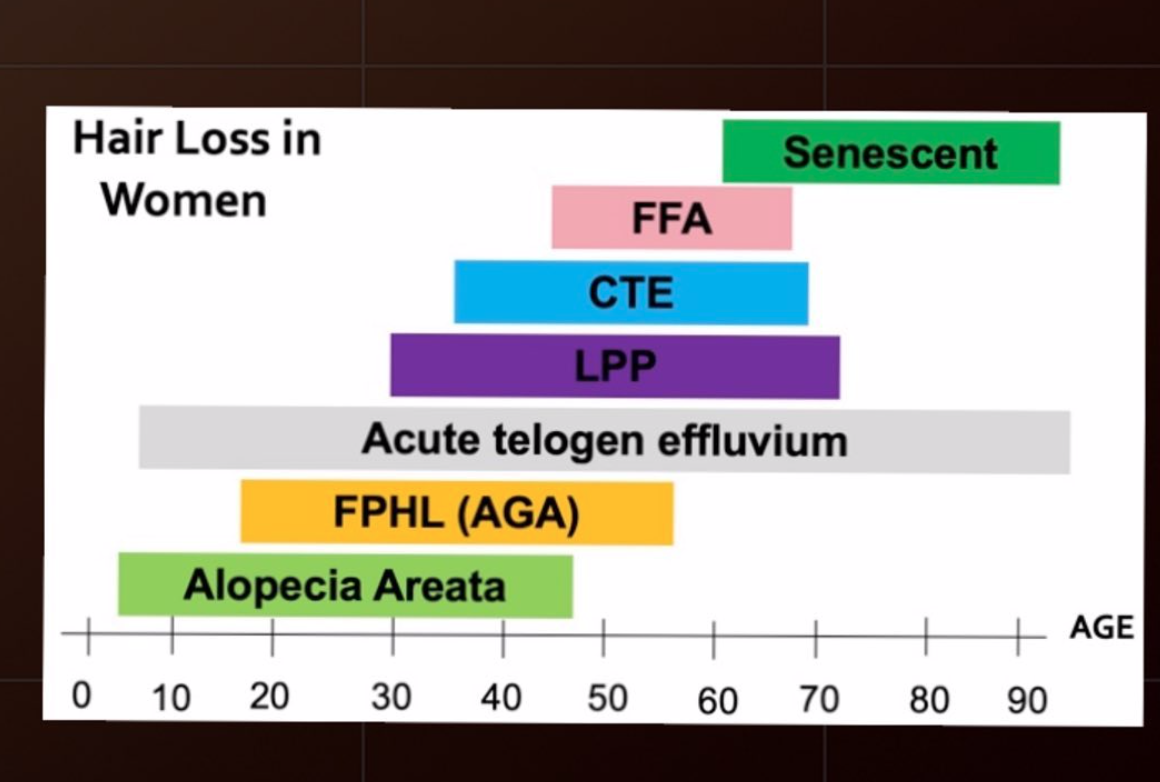Rethinking Hair Loss According to Age
Diagram showing the typical age at which patients first receive their diagnosis. There are generalizations rather than rules.
There are many reasons for women to lose hair. Some conditions are far more likely to occur in certain age groups. This chart shows the average age that patient’s first receive their diagnosis. They are not rule but rather averages. Many exceptions exist
A 72 year olf female does not suddenly start to develop androgenetic alopecia. This typically would have happened much earlier. Alopecia areata can occur at any age but most develop it before age 40. Chronic telogen effluvium and lichen planopilaris affects women mostly starting in the mid 30s and older. Of course, they can occur earlier, but it’s not common. Frontal fibrosing alopecia generally affects women age 45-65 but again there are exceptions. This chart helps organize the clinician’s thinking. Most 23 year old females with concerns about hair loss have female pattern hair loss or telogen effluvium (or both). Most 75 year old women with sudden onset hair loss have telogen effluvium. (CTE=chronic telogen effluvium; LPP=lichen planopilaris; FFA= frontal fibrosing alopecia).
This article was written by Dr. Jeff Donovan, a Canadian and US board certified dermatologist specializing exclusively in hair loss.

